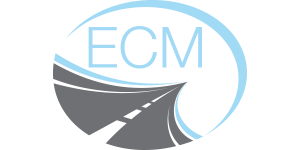
Let’s be real, change can be difficult. Some people seem to be wired to like variety, novelty or change from the routine. Others seem to prefer the status quo, the predictable and the familiar. Some of the top obstacles given as challenges to overcome when implementing technological change have to do with people: Lack of user acceptance, resistance to change and generational learning concerns.
We all know there are reasons for making changes – something isn’t working or an improvement is necessary to remain competitive. What would you say if I told you that you could make a change in your organization that would save you time and money, all the while the users do not have to change the way they process their work or learn a new system or application?
I know it seems hard to believe, but let me tell you how it’s done in the world of Enterprise Content Management (ECM) when it’s used as a centralized document and information repository. First, a little about ECM’s role as document storage and why it’s used. Information is the lifeblood of organizations, yet most companies struggle to find data strewn across disconnected silos (a department system that operates in isolation from others). The challenges of managing data across independent systems are heightened by today’s ever-increasing volumes of documents. ECM’s core document management capabilities are helping organizations make headway with the problem of centralizing and consolidating critical information in one place. One commonplace issue we see with other repositories is the real- time exchange of data between disparate systems and the ECM repository. An ECM solution that can provide a real-time guaranteed data exchange between line of business applications serves not only as a storage place but as an enterprise information hub.
So, what does this have to do with not having to train staff on a new system when deploying an ECM solution?
The enterprise content management informational hub automatically orchestrates key business processes, synchronizing information managed by the system in real time with tasks and activities initiated by other mission-critical lines of business systems. Here’s where it’s important: By doing so, your users are able to work in the line of business systems with which they are most familiar while accessing critical documents and other supporting materials – without having to toggle between screens and systems. In other words, ECM acts as a middleware in this scenario. It’s the back-end process and document management that sits under the user’s primary system, whether it be SAP, Microsoft Sharepoint, Peoplesoft, Salesforce or any of the hundreds of applications. As a result, many people don’t even know they’re using ECM; they simply see additional functionality as a new feature in their line of business software. To me, this is the only way that technology should work for the person using it.
Why we choose to partner with Hyland OnBase , an industry ECM solutions leader
The reality is there is no one-size fits all ECM solution, product or vendor on the market today. There are significant differences between ECM products and vendors, but those differences aren’t always cut-and-dry on paper. As it applies here, not all ECM solutions provide real-time access to data or work together with other line of business systems. Because the area of a particular business process — servicing a customer request or handling an insurance claim, for example – falls outside the area of any one application or even the ECM, the required data is not always easily accessible, especially in real time. Moreover, silos of disconnected information don’t support any form of seamless data integration, so human involvement is required to communicate and share data. We choose to provide Hyland’s OnBase as an ECM solution since OnBase provides a bi-lateral exchange of information between your organization’s systems, orchestrating a real-time, guaranteed exchange of date between these applications. With it, users have instant access to all the information they need, directly from the screens of their familiar core applications.
By having an ECM solution that offers the right integration capabilities, users can stay within the familiar line of business system to get to the content in the ECM system. For those who are open to using ECM as their front-line systems, they can do that as well. Either way, choosing a system that meets the needs of your organization and those of your staff keeps the business growing and improving with minimal disruption.